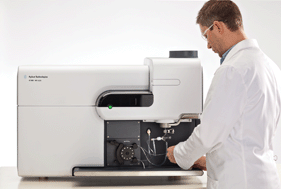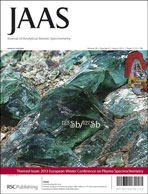Determination of boron in high-temperature alloy steel using non-linear inter-element correction and microwave plasma-atomic emission spectrometry
Abstract
The determination of B in high-temperature alloy steel using microwave plasma-

- This article is part of the themed collection: 2013 European Winter Conference on Plasma Spectrochemistry, Krakow, Poland

 Please wait while we load your content...
Please wait while we load your content...